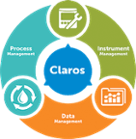-
Products
-
Lab Instruments
Titration Systems Other Instruments
-
Lab Meters and Probes
Calibration Standards Other Meters and Probes
- Chemistries, Reagents, and Standards
-
Online Analyzers
EZ Series Analysers
- Iron
- Aluminium
- Manganese
- Phosphate
- Chloride
- Cyanide
- Fluoride
- Sulphate
- Sulphide
- Arsenic
- Chromium
- Copper
- Nickel
- Zinc
- Ammonium
- Total Nitrogen
- Phenol
- Volatile Fatty Acids
- Alkalinity
- ATP
- Hardness
- Toxicity
- Sample Preconditioning
- Boron
- Colour
- Nitrate
- Nitrite
- Silica
- Hydrogen Peroxide
- EZ Series Reagents
- EZ Series Accessories
- EZ sc Series Inorganics
- EZ sc Series Metals
- EZ sc Series Nutrients
- Flow and Collections
-
Online Sensors and Controllers
Conductivity Sensors
- 3400 Analogue Contacting
- 3400 Digital Contacting
- 3700 Analogue Inductive
- 3700 Digital Inductive
- 9523 Cation Conductivity
- Multiparameter Online Panels
- Claros Water Intelligence System
- Test Kits & Strips
-
Microbiology
Prepared Media
- BARTS
- Liquid MPN
- MUG Tube
- Membrane Filtration
- Paddle Testers
- Presence-Absence
- Total Count Media
- Yeast and Mold
Labware- Accessories
- Funnels, Pumps & Manifolds
- Microbiology Filters
- Petri Dishes & Accessories
- Sampling Bags
- Vials, Tubes, Bottles & Racks
-
Lab Equipment and Supply
ApparatusInstruments Glassware/PlasticwareGeneral Lab Consumables Safety Equipment Books and Reference Material
- Samplers
- Industrial UV
- Electrochemistry
-
Lab Instruments
- Parameters
- Industries
- Support
- Service
- e-Shop
- Brands
Hach Australia
Choose your country or region:
Europe
Americas
Asia - Australasia
- Australia
- Mainland China
- India
- Indonesia
- Japan
- Malaysia
- New Zealand
- Philippines
- Singapore
- South Korea
- Thailand (Thai)
- Taiwan
- Vietnam
Middle East - Africa
Prices Online Include GST 1300 887 735
Surface Water Monitoring
What is surface water?
Surface water generally includes lakes, rivers, and reservoirs. Surface water is the source water for the majority of large, well-populated metropolitan regions. Unlike groundwater, which is filtered through rock, soil, and sand, surface water is exposed to the elements, making it more likely to contain organic and inorganic contaminants.

Why test surface water?
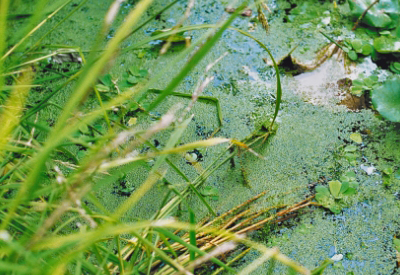
Because surface water is exposed to natural and man-made influences, it has a broader exposure to all types of contamination including organic matter responsible for disinfection byproduct formation.
With analytical testing, you can:
- Determine the best disinfection strategy based on your unique source water
- Control the process in real-time based on source water conditions
- Establish a baseline for tracking DBP removal
- Optimize coagulation/flocculation process
Which options are right for you?

Monitoring your source water can help your facility achieve efficiencies during the treatment process that contribute to lower operating costs and higher quality drinking water. Whatever your needs, Hach is ready to help with information, technology, and support.
Explore the various parameters and methods for surface water monitoring below.
Ammonia
Ammonia levels can reach mg/L in surface water, especially in smaller water bodies and streams located in agricultural areas. These levels can change seasonally and need to be monitored. The ammonia concentration value is used to help define the chlorine to nitrogen ratio if the treatment facility uses a chloramination process. If ammonia-containing source water is used in a free chlorine facility the ammonia will react with chlorine to form chloramines, but in an uncontrolled manner. The chloramines can cause taste and odor problems and possible nitrification issues in the distribution system if the ammonia is not destroyed or the chloramine formation controlled. The standard salicylate method for ammonia can be used to determine ammonia levels in the unchlorinated water.
Find the right testing solution
Free Chlorine
Ammonia can be destroyed by taking the water through breakpoint chlorination. This means that free chlorine is added to the water to convert the ammonia into chloramines. The further addition of free chlorine converts or "breaks" the chloramines down into nitrogen gas and other volatiles species leaving only free chlorine as the residual disinfectant. Free chlorine is also added at the surface water intake or inlet to prevent growth of zebra mussels and Asiatic clams. DPD Free Chlorine can be used to determine when the desired free chlorine residual is reached. Free chlorine is also used to oxidize iron and manganese to form insoluble precipitates which can be removed by filtration. Use the Indophenol Method for Free Chlorine to measure free chlorine when iron or manganese is present.
Find the right testing solution
UV-254
UV-254 is a measurement of the UV absorbing organic constituents at the 254 nm wavelength. This measurement has shown to be a good indicator of the amount of organic material present that is likely to react with chlorine to form disinfection byproducts. The method uses no reagents and requires an instrument capable of measuring at 254 nm. The method should be used with surface waters like large reservoirs or lakes that have a relatively stable organic level. A change in the UV 254 absorbance value can indicate changes in water quality that may impact the disinfection process. Storm events, algal blooms or reservoir turnover would be examples of events that could impact the UV-254 value and the subsequent treatment process. The UV-254 measurement is made following sample filtration through a 0.45 micron filter. The UV-254 value is also used in the calculation of SUVA which is used to determine compliance for reducing DBP precursor material under the Disinfectants and Disinfection Byproduct Rule.
Find the right testing solution
Total Organic Carbon
Total organic carbon (TOC) is the amount of carbon in organic compounds present in a water sample. In surface water, the TOC is primarily from the natural decomposition of plant materials. The TOC is the primary source material for reacting with chlorine and other oxidants to form disinfection byproducts. The TOC values are monitored to determine source water quality, changes to the source water quality and to provide guidance in selecting a treatment strategy for its removal and management of disinfection byproduct formation. Individual treatment plants are required to achieve a specified percent removal of influent TOC between the raw water sampling point and the treated water TOC monitoring point. Strategies to minimize TOC in source waters are important in minimizing treatment costs and disinfection byproduct formation.
Find the right testing solution
Iron
Iron can be present in surface water, usually through contact with iron containing rocks and sediments. The level of iron in a surface water remains nearly constant and the iron is usually present as ferric iron due to air oxidation and mixing of the surface waters. Changes in iron concentrations can indicate lake or reservoir turnover or corrosion of the intake pipe or line. Use the FerroVer Iron method for routine checking for the presence of iron. The TPTZ method may be used for low level iron testing.
Find the right testing solution
Permanganate
The main goal of water treatment with sodium permanganate or potassium permanganate is to provide adequate preoxidation to remove organics and/or dissolved metals, such as manganese and iron, from the water. Natural organic matter (NOM) removal is usually the primary goal for surface water treatment to minimize formation of disinfection byproducts (DBPs). Removal of metals by oxidation is usually the primary goal for ground water treatment; however, the general practice is to sequentially remove metals by precipitation and filtration.
Operational challenges usually come to determining and maintaining the correct feed of permanganate. The balancing act is between underfeeding permanganate and therefore not achieving the goal of NOM and/or metals removal and overfeeding that may lead to an unwanted pink color in finished water. In addition, over-oxidizing of Mn leads to its dissolution and therefore defeats the purpose of the treatment (inefficient filtration). To maintain such a delicate balance, the analysis of treated water must be constantly conducted in process and therefore online instrumentation is preferred for such applications. Instrumentation should provide accurate results and be robust.
Find the right testing solution
Manganese
Manganese can be present in surface waters especially when iron is present. Manganese levels can fluctuate in the water especially during times of reservoir turnover. At concentration levels above 0.05 mg/L, it causes black stains on plumbing fixtures, laundry and other items in contact with the water. Use the extremely sensitive PAN method to determine manganese levels present in the source water.
Find the right testing solution
Dissolved oxygen
When a reservoir becomes thermally stratified, the bottom layer will be low in dissolved oxygen. This leads to the development of anaerobic conditions in the deeper layers of the lake and bottom sediment. Manganese in those layers is converted through bacterial action from insoluble oxide forms to manganese ions (Mn2+), which are soluble and can easily leach out of the sediment into the water. The inversion is, therefore, accompanied by a rising concentration of dissolved metals, such as iron and manganese in drinking water plant intake.
Continuous monitoring of dissolved oxygen (DO) concentration in source water prior to intake is of special value for optimization of the treatment processes. It has been shown that dissolved oxygen is a good indicator of manganese concentration and may help to predict the beginning of this seasonal issue with high accuracy
Find the right testing solution
pH
The pH of surface water varies. Monitor the pH to determine the adjustments that are required to give the optimum pH range for the disinfection process. Disinfection byproduct formation is impacted by water pH during chlorination. Monitoring the pH is also a surrogate method to quickly detect any intentional or unintentional events that have occurred to the source water.
Find the right testing solution
Turbidity
Turbidity indicates the cloudiness or amount of suspended material in the water. The higher the turbidity the greater the impact on the disinfection process efficiency. The particles can shield or encapsulate harmful pathogens and prevent them from reacting with the disinfectant being used. A sudden increase in source water turbidity can indicate that a major change in source water quality has occurred.
Find the right testing solution
Alkalinity
Alkalinity is the acid-neutralizing capacity of a water and impacts the amount of organic matter that can be efficiently removed in conventional water treatment plants. Alkalinity is measured in source waters prior to any treatment and the alkalinity value is used to determine the amount of Total Organic Carbon (TOC) a treatment plant is required to remove under the enhanced coagulation requirement of the Disinfectants and Disinfection Byproduct Rule.
Find the right testing solution
Chlorine Demand
Chlorine demand is a measure of the amount of chlorine consumed by a source water after a specified period of time at a fixed pH and temperature. Natural organic matter (NOM), iron, reduced manganese and ammonia are examples of species that consume chlorine during the disinfection process. A high chlorine demand suggests that disinfection byproducts may be formed if the demand is due to natural organic matter. The chlorine demand test can be modified to use the specific conditions of your source water, to investigate the demand from alternative surface water sources and to study the impact of weather events or other seasonal occurrences.
Find the right testing solution
THM Formation Potential
Source waters should be tested to check for the tendency of the water to form trihalomethane (THMs) disinfection byproducts when chlorine is used as a disinfectant. The THM Formation Potential test is a method used to determine the formation potential of a source water or a blending of source waters. Chlorine concentrations, pH levels and temperature conditions can be varied to characterize THM formation conditions. The formation potential test can be modified to use the specific conditions of your source water, to investigate the demand from alternative surface water sources and to study the impact of weather events or other seasonal occurrences on treatment processes.
Find the right testing solution
Coagulation/Flocculation
If your water treatment process includes coagulation/flocculation to remove colloidal particles, you can use advanced monitoring and optimization tools available from Hach. The solids suspended in the water have negative charge and positively charged chemicals are added to neutralize the charge. Coagulation is the process of neutralization and growing a gelatinous mass to trap (or bridge) particles, thus forming a mass large enough to settle or be trapped in the filter. Settling prior to filtration is preferred, so the next step – flocculation – provides gentle stirring or agitation to encourage the larger particles formed with addition of coagulant to agglomerate into masses large enough to settle under gravity and be removed from solution prior to filtration. The entire process is called coagulation/flocculation/ sedimentation and comprises the core of conventional water treatment prior to filtration.
Coagulation and flocculation are perhaps the most overlooked processes when installing instrumentation in a water treatment facility. This may be due to the fact that monitoring at these points is typically not a regulatory requirement. However, every step in the treatment process depends on preceding steps and those that follow to make the entire process function effectively. Measurement is critical at every step to optimize the process and control operational costs.
Find the right testing solution
Nitrate NO 3
Nitrate is a regulated contaminant with 10 mg/L maximum contaminant level (MCL) often found in agricultural areas due to the use of fertilizers. Monitor your sources for nitrate because treatment is difficult and may require RO filtration.
Find the right testing solution
Nitrate NO 2
Monitor your sources for nitrite as it may be present in the source and gets oxidized during treatment to produce nitrate.
Find the right testing solution
Additional Resources
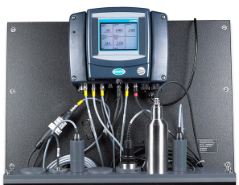

The benefits of an integrated panel for source water monitoring
Monitoring source water not only gives an early indication of potential problems, but also provides information to optimize treatment plant performance. Learn how an integrated panel will improve your monitoring process.
LEARN MORE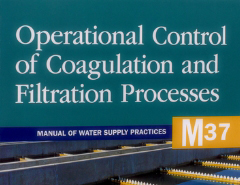
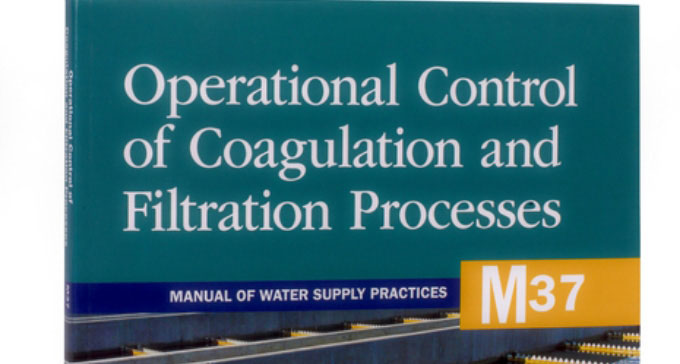
Purchase the AWWA Manual on Coagulation and Filtration Processes
This AWWA Manual of Water Supply Practices is designed to help you keep your treatment plant’s coagulation and filtration processes operating at optimum efficiency.
LEARN MORE
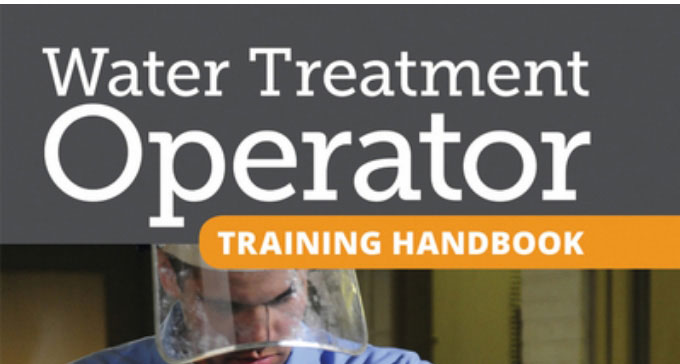
Purchase the Water Treatment Operator's Training Handbook
AWWA's most popular training handbook for water treatment operators, this
handy guide provides a complete introduction to water treatment operations and equipment. It's an excellent resource when studying for your certification exam.
Select the attributes below to find the right surface water product for you.
Compare our different products used for various applications by exploring the resources and options below.





 Recurring Orders
Recurring Orders 

